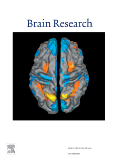
“Although hematopoietic and immune system show high levels of the cannabinoid receptor CB2, the potential effect of cannabinoids on hematologic malignancies has been poorly determined.
Here we have investigated their anti-tumor effect in multiple myeloma (MM).
We demonstrate that cannabinoids induce a selective apoptosis in MM cell lines and in primary plasma cells of MM patients, while sparing normal cells from healthy donors, including hematopoietic stem cells.
Remarkably, blockage of the CB2 receptor also inhibited cannabinoid-induced apoptosis.
Cannabinoid derivative WIN-55 enhanced the anti-myeloma activity of dexamethasone and melphalan overcoming resistance to melphalan in vitro. Finally, administration of cannabinoid WIN-55 to plasmacytoma-bearing mice significantly suppressed tumor growth in vivo.
Together, our data suggest that cannabinoids may be considered as potential therapeutic agents in the treatment of MM.”
https://www.ncbi.nlm.nih.gov/pubmed/27778331
http://www.thctotalhealthcare.com/category/multiple-myeloma/




1098-2744/asset/olalertbanner.jpg?l=SkaBT8QEx2rBLBmQ2URf7fAaMkdr93XX6rZGHTxNciKmUq8irCOtJ8iDpNMUJn%2FA)



